It is always a pleasure to make good use of discarded materials. And when it comes to fuel and heating, it is also very profitable. Waste oil heating stoves are a prime example. They can use any oil that can burn. Transmission oil, diesel oil, machine oil, confectionery oil, vegetable oil… Really any oil. There’s no problem with fuel for these units. What they found, they poured. And the furnace on waste oil with their own hands are also made of throwaway materials: an old gas or oxygen cylinder, sections of pipes of different diameters or pieces of metal.
Conteúdo do artigo
The principle of operation of homemade stoves
If any waste oil is simply set on fire, it will smolder mercilessly and even more actively “smell”. Therefore, direct combustion is not used. First, volatile substances are vaporized, then they are burned. This is the basic principle of design development. Therefore, in some variants, the stove has two combustion chambers connected by a tube, in which holes are made.
In the lower chamber, the fuel is heated and vaporized. Combustible vapors rise upwards. Passing through the tube with holes, they mix with oxygen dissolved in the air. Already in the upper part of this pipe, the mixture ignites and burns out in the second chamber. And the combustion of vapors occurs with the release of much more heat and less smoke. With the right technology, there is practically no smoke, as well as soot.
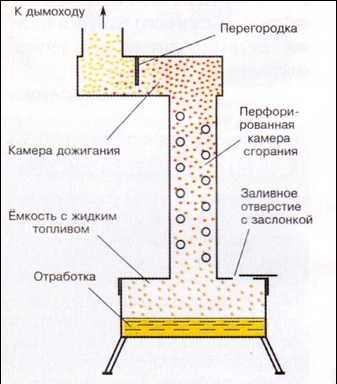
The second method of separation of “heavy” fuel (oil of any origin) into “lightly flammable” components is more effective, but also more difficult to realize. For effective vaporization a metal bowl is installed in the lower chamber. It is heated, drops of waste falling on it instantly turns into volatile combustible vapors. In this case, the glow is (in the right mode) white-blue, as when burning plasma. Hence another name for this design – plasma bowl.
To achieve the highest efficiency of fuel combustion, the waste oil must be fed into the lower chamber in very small portions. In some variants – drops, sometimes – a thin stream. That is why this technology is called drip feeding.
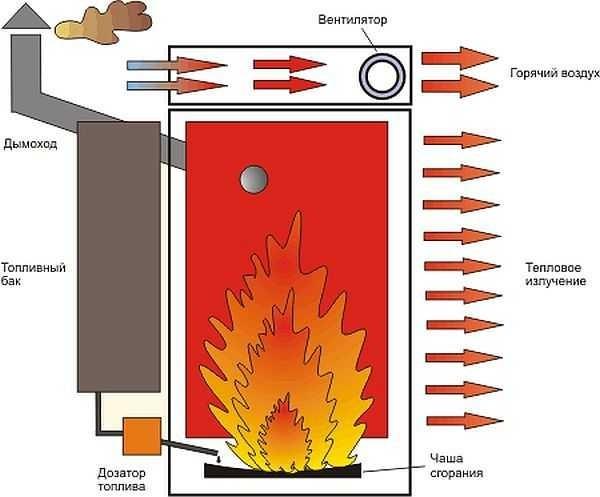
These are the basic principles of the “action” of homemade heating units. There is a very large number of their combinations and variations. A few of them are described below.
An example of burning waste in a plasma bowl you can see in the video below. This is a waste oil furnace “Gekkon”, it has a built-in water heater and can work as a heating boiler.
Advantages and disadvantages
The main and main plus is that used fuel and oils are used, which otherwise had to be disposed of. If the technology is followed, the combustion is so complete that virtually no harmful emissions into the atmosphere occur. The other pluses are equally compelling:
- simple design;
- high efficiency;
- low cost of equipment and fuel;
- works on any oils, of organic, synthetic, vegetable origin;
- allowed to contain up to 10% of pollutants.
There are disadvantages and serious. And the main one is that if the technology is not observed, the combustion of fuel is incomplete. And its vapors get into the room, and this is very dangerous. Therefore, the main and main requirement: stoves, working on waste oil, are installed exclusively in rooms that have a ventilation system.
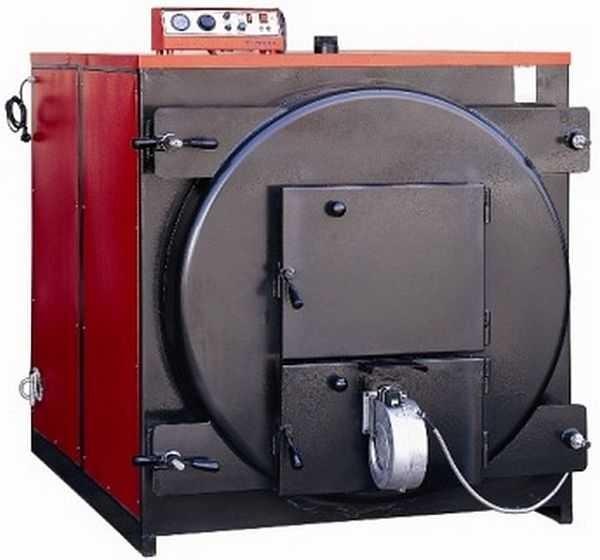
There are more disadvantages:
- to ensure a good draft, the chimney must be straight and high – at least 5 meters;
- regular cleaning of the bowl and chimney is required – daily;
- problematic ignition: you need to first glow the bowl, then feed the fuel;
- water-heating options are possible, but their independent design is a difficult task – you can not greatly reduce the temperature in the combustion zone, otherwise the whole process will fall apart (as an option – to install a water jacket on the chimney, here it certainly does not prevent the decay of fuel).
Because of these features, such units are rarely used for heating residential houses. If they put them, then in separate rooms and in a finalized form.
Scope of application
In the basic version, the homemade stove on waste oil warms the air. They are also called heat guns, heat generators or calorifiers. For heating living quarters in this form is rarely used: the air is dried out, oxygen from the glowing metal walls is burned out. But to maintain normal temperature in industrial or technical premises, such units are very effective: they quickly raise the temperature. They can be seen in service stations, car washes, garages, production shops, where there are no combustible materials, in warehouses, greenhouses, etc.
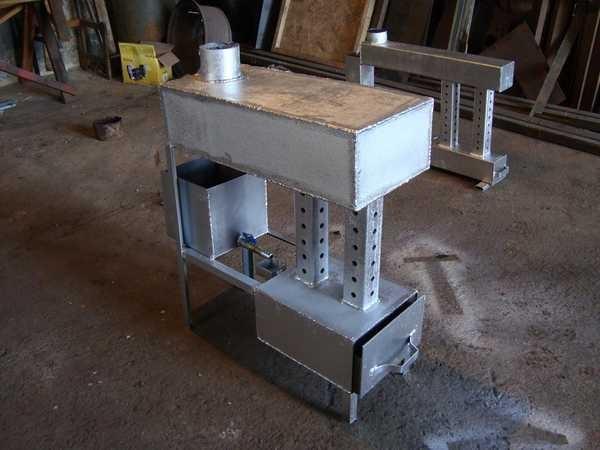
Many options can be finalized: in them you can install a coil for heating water or make a water jacket. Such equipment already belongs to the category of water heating and it can be put in the water heating system. Without automation, a waste oil stove with a water circuit requires constant monitoring, but for a summer cottage, farm buildings with livestock, etc., it is an excellent option.
How to make a furnace on waste oil
Today there are already more than a dozen different designs. They use different methods of extracting thermal energy, have different structures.
Furnaces for burning waste oil from a pipe
The furnace is easier to make if the body is already ready. As such, you can use a gas or oxygen cylinder, a thick-walled barrel or a pipe. The scheme below explains how to make a stove on waste oil from a pipe.
The work of this unit is based on evaporation in a plasma bowl. It can give out up to 15 kW of heat (on average, it can heat 150 squares of area). It is impossible to increase the heat output due to any changes (size of the furnace or increase of air supply): the thermal regime will be broken and instead of more heat you will get more chad, and it is not safe.
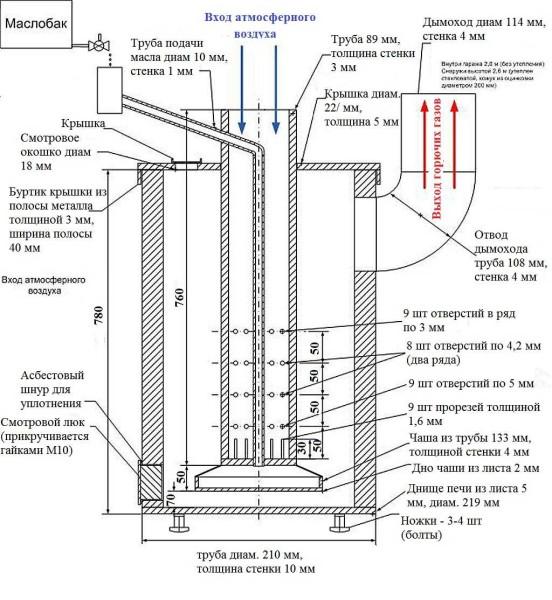
The order of assembly is as follows:
- Making the body.
- We take a thick-walled pipe with a diameter of 210 mm, wall thickness of 10 mm. Height 780 mm.
- We cut out the bottom 219 mm in diameter from steel sheet with thickness not less than 5 mm and weld it on one side. This is the bottom.
- The legs are welded to the bottom (they can be made of bolts).
- At a distance of 70 mm from the bottom make a viewing window. Through it you can monitor the combustion and warm up the bowl at the “start”. Dimensions, respectively, make it convenient for you. The door itself is made of a cut piece of pipe, welding a thin shoulder. But close everything must be airtight, because the perimeter of the door lay asbestos cord. You can use a stove casting, then the dimensions of the hole are cut out for it. It can be bolted directly to the body (asbestos cord is mandatory here).
- On the opposite side of the case, 7-10 cm from the top, weld the pipe for the flue gas outlet. Its diameter is 108 mm, wall thickness is 4 mm.
- Make a lid.
- From the metal thickness of 5 mm cut out a circle with a diameter of 228 mm.
- On the edge weld a shoulder from a strip of metal width of 40 mm, the thickness of the metal – 3 mm.
- In the center of the lid cut a hole with a diameter of 89 mm, a second hole with a diameter of 18 mm is cut on the side. The smaller hole serves as another viewing window, it is made a cover, which is used as a safety valve.
- Make a pipe for air and fuel supply.
- Take a piece of pipe diameter 89 mm, with a wall thickness of 3 mm, length 760 mm.
- From the edge of 50 mm around the circumference drilled 9 holes of 5 mm in diameter.
- At 50 mm above these holes make two more rows of holes with a diameter of 4.2 mm, 8 pieces in each row.
- Going 50 mm higher, a fourth row of 3 mm diameter holes is made. There should be 9 of them.
- On the same side, along the edge of the bolgar cut slits with a thickness of 1.6 mm and a height of 30 mm. Around the circumference of the pipe they should be made 9 pieces.
- From the other end of the pipe, with an offset of 5-7 mm cut a hole with a diameter of 10 mm.
- In the cut hole insert the fuel supply pipe. Its diameter is 10 mm, wall thickness is 1 mm. It ends at the same level as the air supply pipe. The length and angle of the bend depend on where the container with fuel will be located.
- The finished air and fuel supply pipe is welded to the lid. It is exposed so that it does not reach the bottom of the body by 120 mm.
- Making a bowl for fuel
- Now from a pipe with a diameter of 133 mm, with a wall thickness of 4 mm cut off a piece of 30 mm.
- Cut out a 219 mm diameter circle from a 2 mm thick steel sheet.
- Weld it to a piece of pipe. We got a bowl, where the fuel is fed.
- Assembly.
- Inside the body at a distance of 70 mm from the bottom of the bowl is installed. It will be possible to observe (and ignite) from the bottom inspection hatch.
- We install the lid with the fuel/air supply device.
- A chimney is installed on the smoke spigot. The pipe is 114 mm in diameter, with a wall of 4 mm. Its height is at least 4 meters. The part that remains indoors may not be insulated, on the street it is better to insulate it. Chimney – only vertically upwards, inclined sections are excluded.
After installing the oil tank, you can start testing. First, a little paper is laid in the bowl, a combustible liquid is poured in, everything is set on fire. After the paper is almost burned through, the oil supply is opened.
This drawing of the furnace on waste oil is not in vain given with such an accurate indication of materials. It is necessary to use exactly such spare parts. As a result of the work of a homemade furnace, with the consumption of 1-1,5 liters of fuel per hour, you can heat a room up to 150 “squares”.
Drawing of the furnace from a pipe or cylinder in video format
The furnace on waste oil from a cylinder (oxygen or gas) is presented by the author in the video. The design is similar to the one described above, but with original refinements (and it is a little simpler)
Mini waste oil stove with your own hands
This homemade stove with small dimensions and weight (10 kg), fuel consumption of about 0.5 lira per hour gives out 5-6 kW of heat. It can be melted more strongly, but it is not necessary: it can explode. The design is loved by car enthusiasts: even in severe cold weather, it warms up the garage quickly, consumes oil sparingly, and is compact. That is why it can be called “garage”.
The fuel tank of this small air cannon is assembled from the bottom and top of a standard 50-liter gas cylinder. It turns out to be a very robust construction (save at least one circular seam from the cylinder – there is an O-ring there, which will give more strength. You can make a tank from any other container of similar dimensions: diameter 200-400 mm and height of about 350 mm.
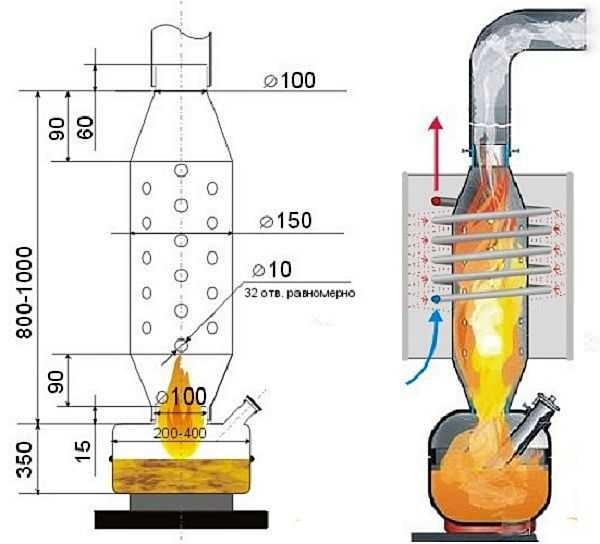
In addition to the container for fuel, you need to make a pipe in which the fuel-air mixture is mixed. The wall thickness here is not less than 4 mm. You can use a pipe of a suitable diameter. The cones are welded from structural steel not thinner than 4 mm.
The dimensions of the waste oil stove shown in the drawing can be adjusted up or down, but only by 20 mm – no more. Especially carefully need to weld seams in places funnels: here the fuel-air mixture lingers for a long time, because of which the temperature is considerable.
The length of the chimney pipe – no more than 3.5 meters. Otherwise, because of too good draught, the fuel will be pulled into the chimney, which will significantly increase consumption and reduce heat output.
The picture on the right shows the water-heating version of the homemade stove. Around the top of the afterburning zone make several turns of steel tube, through which water is passed. In order that the temperature of the gases does not fall much, the coil is closed with a heat-reflecting casing made of steel. Cold water is supplied from below, passing through the coil, heated and goes into the system.
Miracle furnace on waste oil
This option is very popular with dachniks and in garages. A convenient small stove, which is made with round or square burning zones. The design is so successful that there are even industrial versions. For example, one of the enterprises sells it under the name “Ritsa”. The scheme gives all the necessary dimensions.
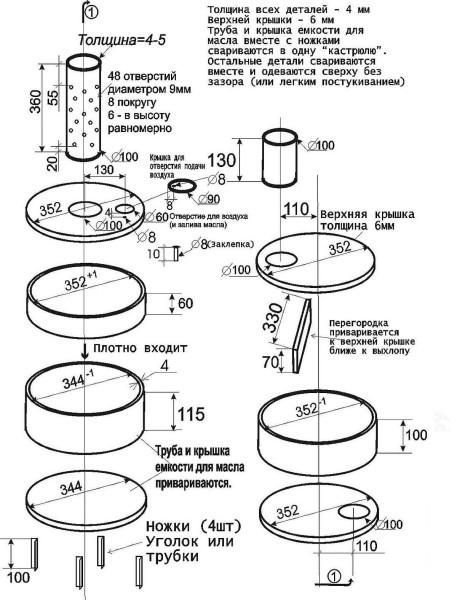
Video report on how to assemble this furnace will help to orient in the order of work.
The video below shows the variant with square containers, its filling and dimensions.
Factory variants
Furnaces that work on waste oil, make not only artisanal method, they are also produced by industry. And there are both imported and Russian. But the type of construction they have different.
European or American boilers on waste oil they belong to the category of stoves on liquid fuel. They use the principle of supercharging: oil is atomized into small droplets, connected to the air flow. And already the fuel-air mixture is ignited. Imported factory furnaces use the same principle, only a special burner is placed, in which the fuel is heated before atomization.
To appreciate the difference in technology and structure, watch the following video. The device is completely different.
In Russian-made furnaces, most of them use the first principle – there is a heated (plasma) bowl in which liquid fuel is pretrechestva in gaseous, mixed with air and burned. The following units are built according to this principle:
Drawings and schemes
Models of furnaces that use waste oil are created a lot. And below are a few schemes that can give you an idea, and, the furnace on waste oil with their own hands, will be effective, economical and safe.
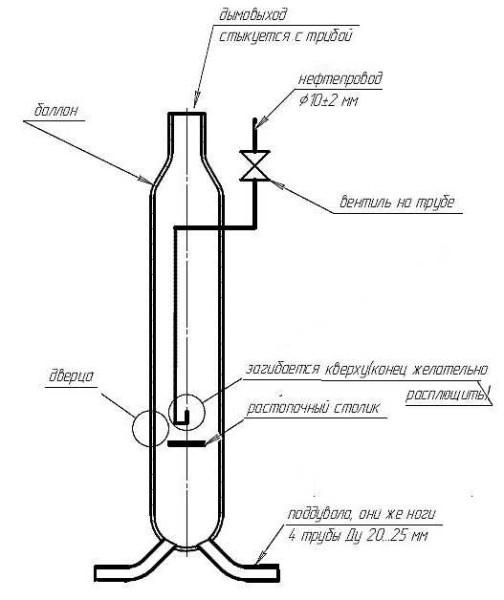
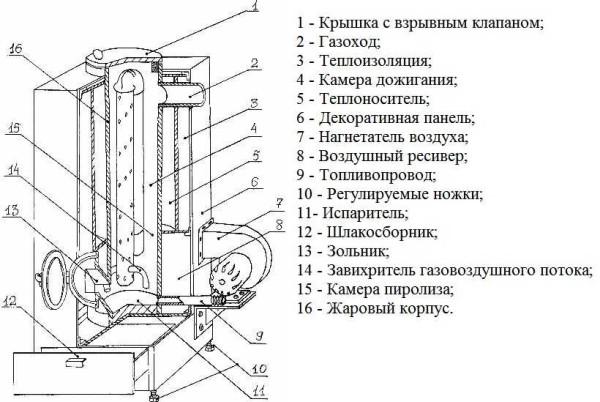
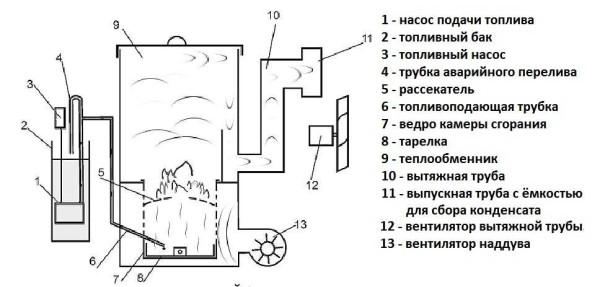

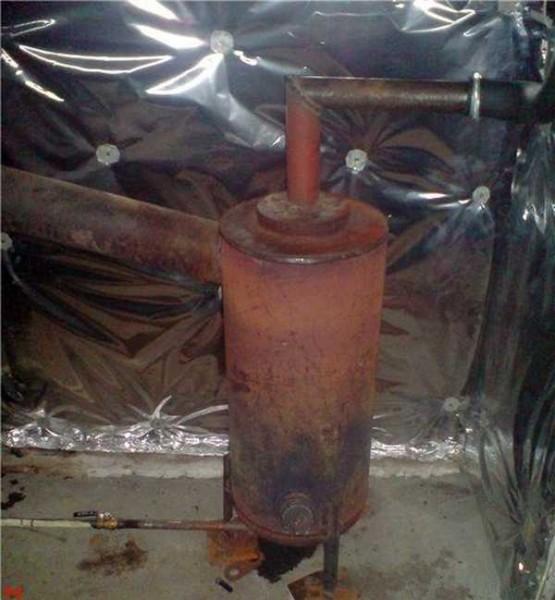
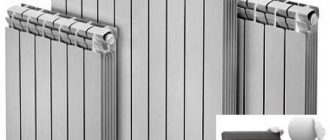
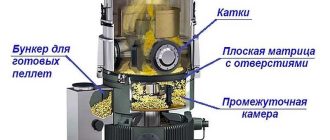
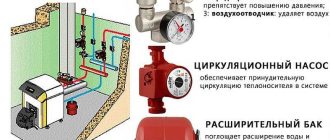
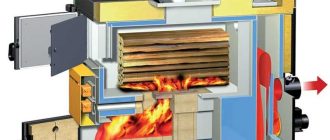
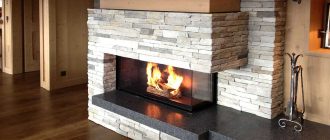
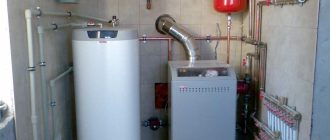
Building a waste oil stove was a fun project! I remember collecting used oil from local restaurants, which was a bit of a scavenger hunt. Once it was all set up, the heat was great for those chilly nights! Totally worth the effort for the savings too!